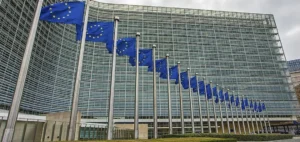Building a nuclear facility in Alaska requires federal and state permits.
Reforming Alaska’s nuclear regulations: SB 177 redefines the energy landscape
The Nuclear Regulatory Commission (NRC) is the authority on civil nuclear safety. NRC’s licensing process addresses all safety aspects of each nuclear reactor application. The State’s authority over nuclear power generation is limited to site selection. Previously, the Alaska Department of Environmental Conservation could not issue a permit for the siting of a nuclear facility. Unless the installation site has been designated by the legislature. And that the local municipal government has not approved the permit.
Thus, the new regulations stem from Senate Bill (SB) 177, which Governor Mike Dunleavy signed into law in 2022. Updating Alaska Status (AS) 18.45. The 2022 updates to AS 18.45 remove the requirement for the legislature to designate land for a nuclear microreactor. Which is defined as a state-of-the-art nuclear reactor capable of generating 50 MW or less.
Major Changes in Nuclear Regulation in Alaska
In “unorganized” boroughs with no municipal government, the legislator must approve the site permit. The regulation requires the applicant to involve the public from the outset of the permitting process. So, according to the Alaska Beacon, among the restrictions is the fact that a reactor can’t be built within 2,700 feet (823 meters) of a residence. 300 feet (92 meters) from a national park or wildlife reserve, in a coastal zone vulnerable to storm surges. Within 100 feet (30 meters) of a public road or trail. Or in a protected area because it’s used for drinking water.
The rules also stipulate that if part of a facility is located in a 100-year flood plain, operators must demonstrate that a flood would not damage the facility.
“These changes give communities more control over how they meet local energy demand and pave the way for developers to use reliable, carbon-free nuclear power to work in remote locations,” said the State of Alaska.
“For rural Alaskan villages now dependent on diesel power generation, nuclear microreactor power can be a game-changer, reducing both the cost of electricity and carbon emissions,” said Dunleavy.
“I want all Alaskans to have access to 10-cent power by 2030. These regulations lay the groundwork to achieve that goal.”
“Communicating with stakeholders early and often is extremely important. Giving local governments the ability, or rather the obligation, to participate in the siting of these facilities will be critical to the success of microreactors in Alaska,” added DEC Commissioner Jason Brune.
“Microreactors also have the potential to drive rural resource development projects, which will bring economic opportunities to rural Alaska while protecting human health and the environment.”
Nuclear power in Alaska: Microreactors planned at Eielson and Valdez
The Eielson and Valdez air bases are already planning two major projects. With the support of the Copper Valley Electric Association (CVEA). The U.S. Air Department’s site for flying its first microjet is Eielson Air Force Base near Fairbanks. In September 2022, the department, in partnership with Defense Logistics Agency Energy, issued a call for tenders to build a microreactor at the base.
The contractor will own and operate the reactor. The U.S. government will purchase its energy output under a long-term contract with a fixed firm price. The system must be able to generate electricity and steam, and meet a basic electricity demand of 5 MWe. The aim is to have the microreactor operational by 2027. Meanwhile, the Alaskan cooperative electricity company CVEA and Ultra Safe Nuclear Corporation met. They agreed to determine the feasibility of building the first commercial installation of a modular micro-reactor (MMR) energy system in the state.
CVEA provides electricity and heating services to over 3,800 commercial customers. As well as residential stretching north 160 miles from Valdez to Glennallen. This covers 100 miles east to west of the Tok Cutoff highway in the northern Matanuska valley.






















